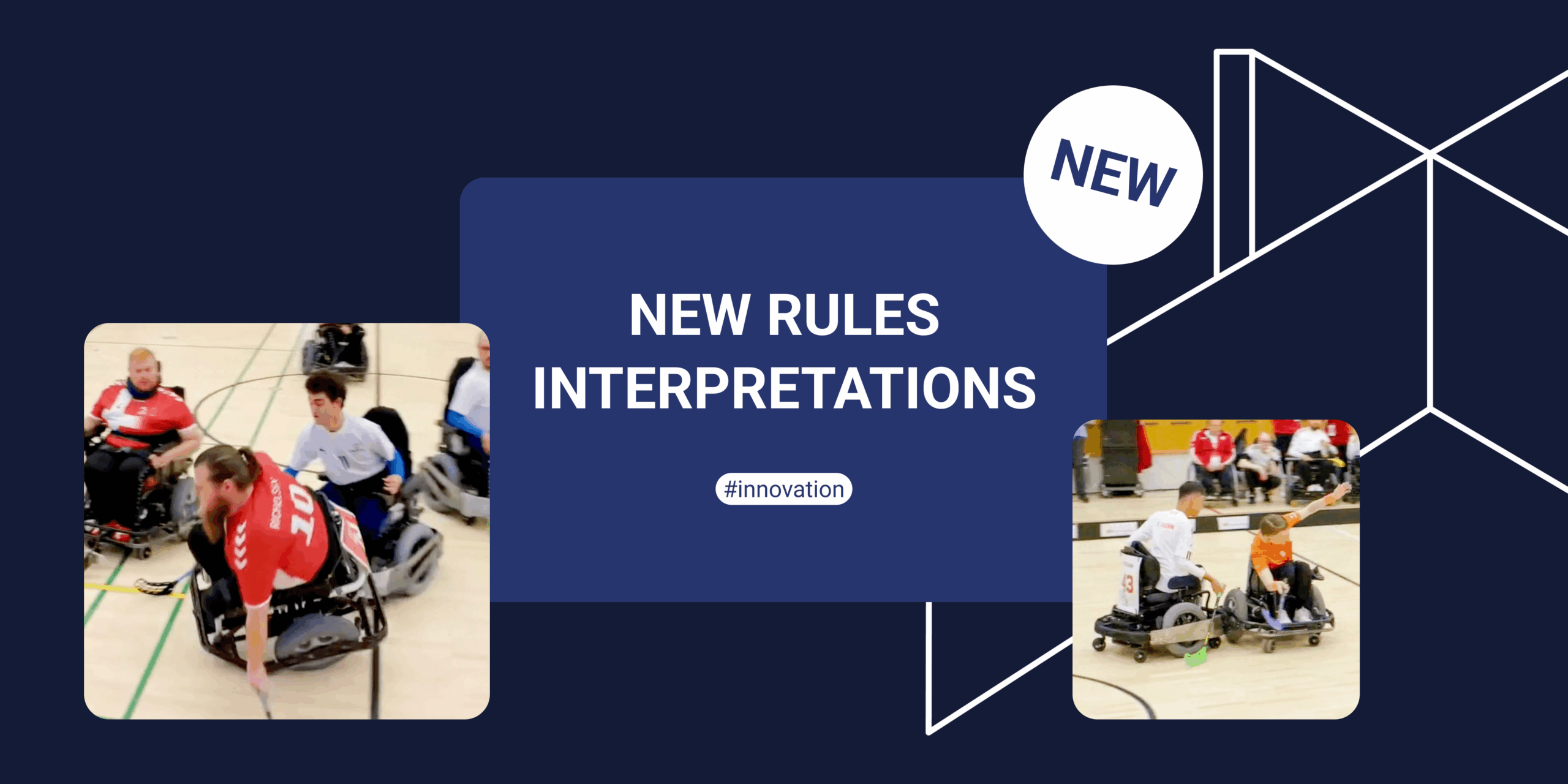New rules interpretations
The Referees and Observers Committee and the Athletes and Coaches committee have started to work together in order to improve our sport even more. Both committees felt that this kind of collaboration was needed and the discussion was open and fruitful.
The main topic of the discussion was what and how we can improve, learning from the experiences in Denmark. Both groups agreed that the games were too rough and some key reasons for this were recognised. These were, in no particular order, the smaller field size, insufficient communication from the referees to the players and too high tolerance for powerchair contacts.
In order to improve for the future the referees will pay more attention to communication and the Referees and Observers Committee will organise webinars for the teams to explain how the referees communicate and what the signs and words used during the matches mean. This webinar will also be used to make the concept of advantage clearer for all participants.
The biggest changes agreed upon in the meeting with the two committees are related to interpretation of some rules about contact with opponents or the boarding.
Off the ball contacts and pushing players can have a huge impact on the game. With the powerchairs becoming more potent, pushing opponents in a significant way is easier than before. Referees will pay extra attention to these situations and react accordingly. Slight pushing when driving side by side is still allowed. Pushing an opponent out of their driving line in a play situation can lead to a free hit for the opponent. Pushing players away in a static situation can lead to a free hit for the opponent and a green (or yellow) card for the player making the offence.
Pushing the boundaries has always been a topic for discussion. Before, the referees felt that some pushing should be allowed when trying to play the ball. However in recent years this has been getting out of hand and, as a result, referees are going to be more strict about pushing the boundaries, especially in cases where a player gains advantage by doing so. If a player intentionally moves the boarding in order to gain more space a green (or yellow) card can be given.
Contacts behind the rear axle. These kinds of contacts can have a huge effect on the opposing player and in some cases can also be really dangerous. Pushing or crashing into an opponent’s powerchair on the side behind the rear axle usually causes the player to stop or even to turn around. These contacts should not be allowed and the referees are instructed to handle them accordingly. If the contact causes the opponent to stop, a free ball is given. In case the contact causes the opponent’s powerchair to turn, a green card can be given. For dangerous contacts a yellow or even a red card can be given.
Here is a summary of the new interpretations
Pushing players
- Slight contacts and small pushes when driving side by side is allowed
- Pushing an opponent out of their moving line in a game situation -> free hit
- Pushing opponents away in static situation or outside the ball situation -> free hit and possibly a green card
Moving the boundaries
- Accidental touches and slight moving of boundaries is allowed
- Accidental moving which gives the player an advantage or significantly moves the boarding -> free hit
- Intentionally moving the boarding in order to gain more space -> free hit and possibly a green (or yellow) card
Contacts on the side of a powerchair behind the rear axle
- Slight contact, even behind the rear axle, while driving side by side is allowed
- If the contact causes the opponent to stop or turn slightly -> free hit
- If the contact causes the opponent to turn significantly -> free hit and possibly a green card
- If the contact is clearly dangerous for the opponent -> free hit and a yellow (or red) card

